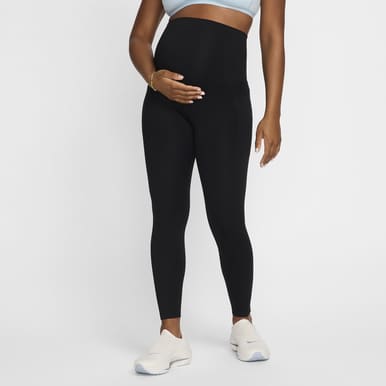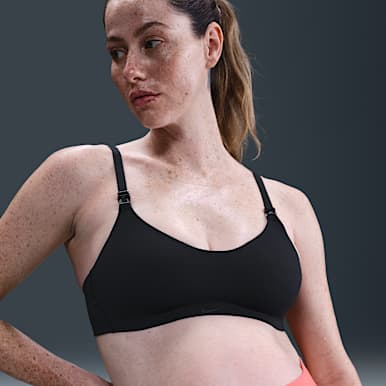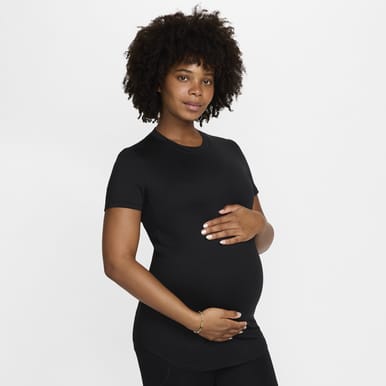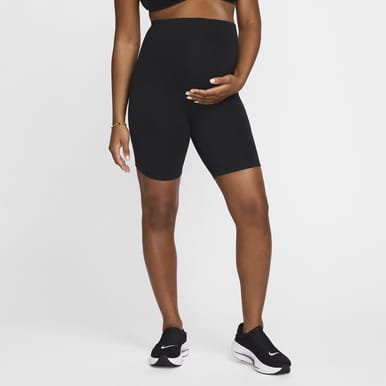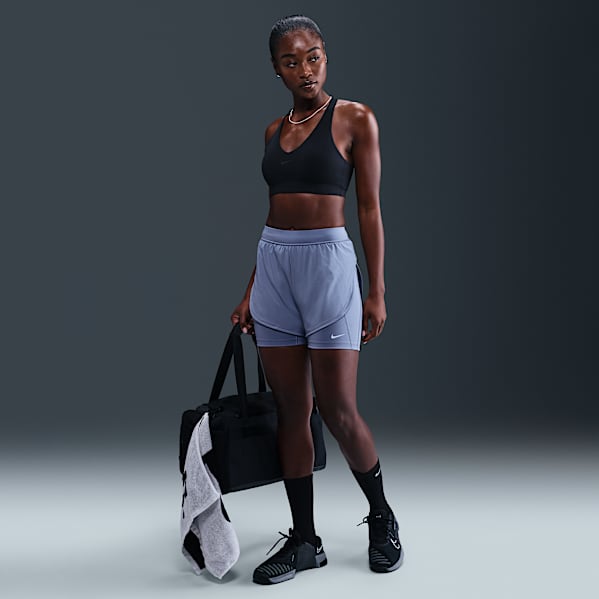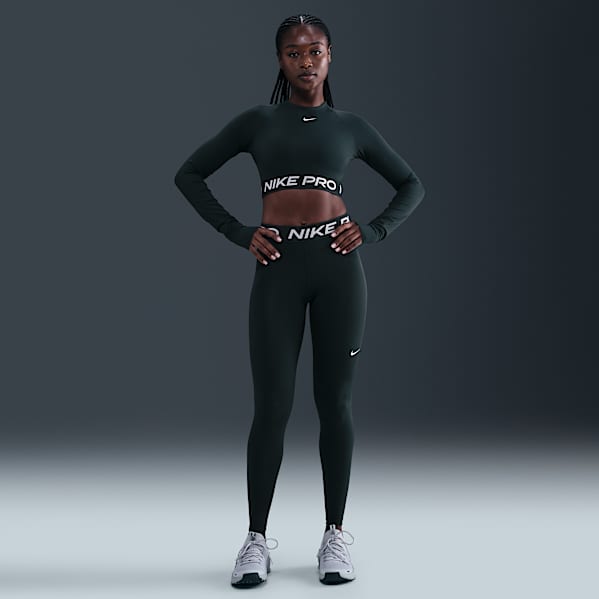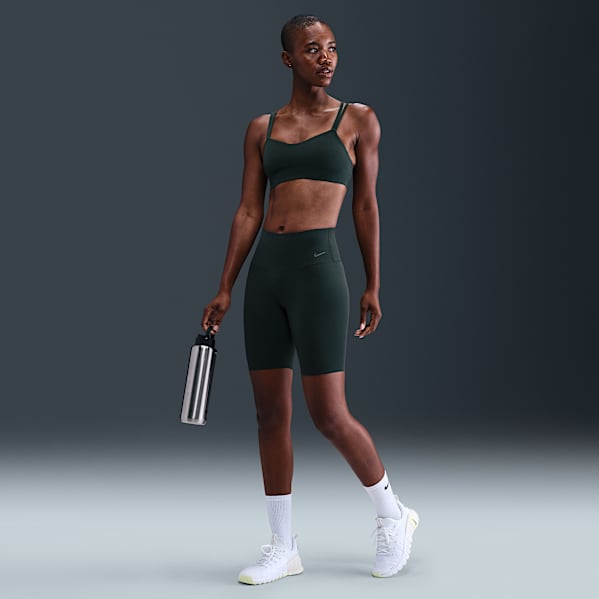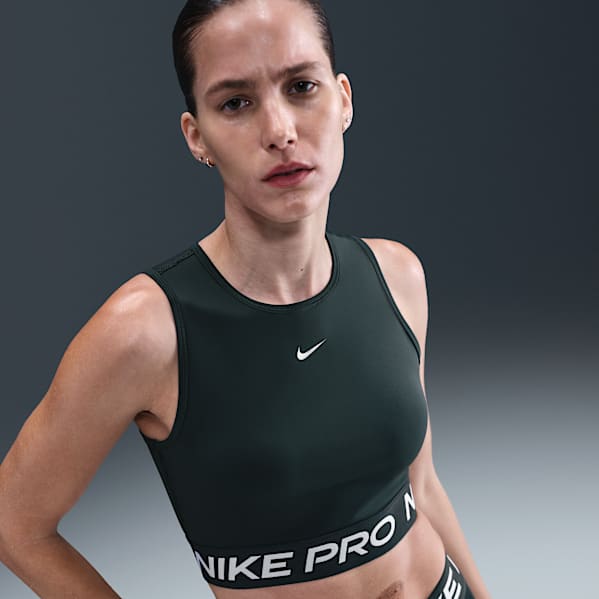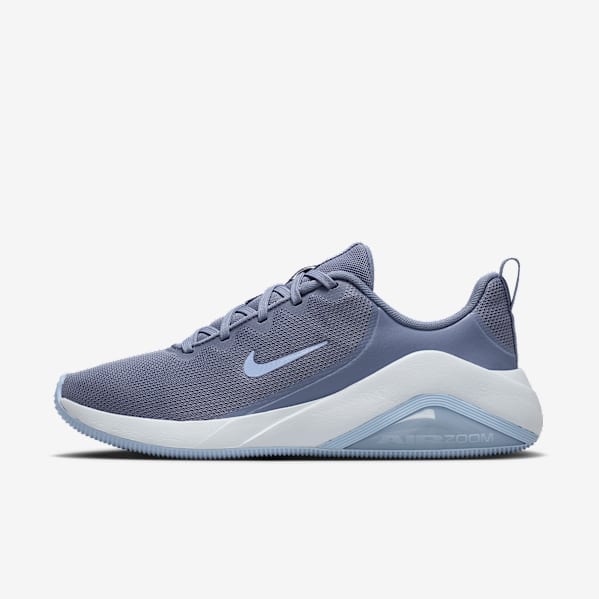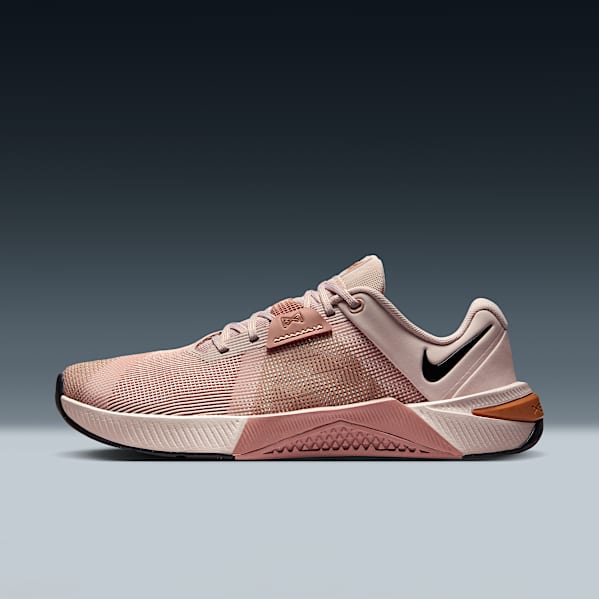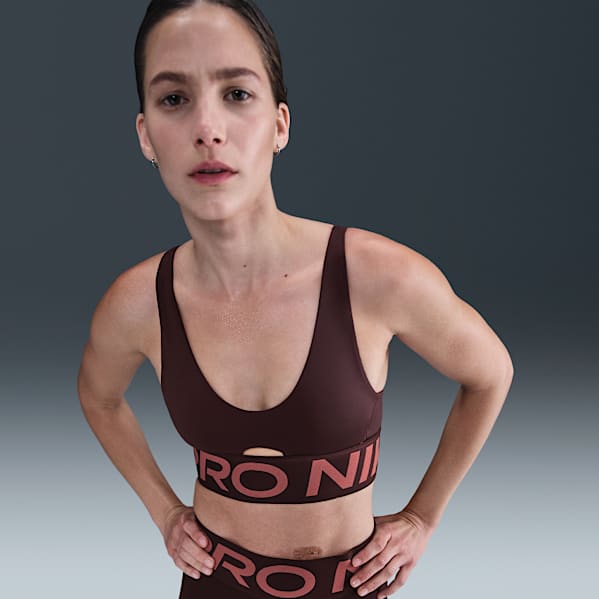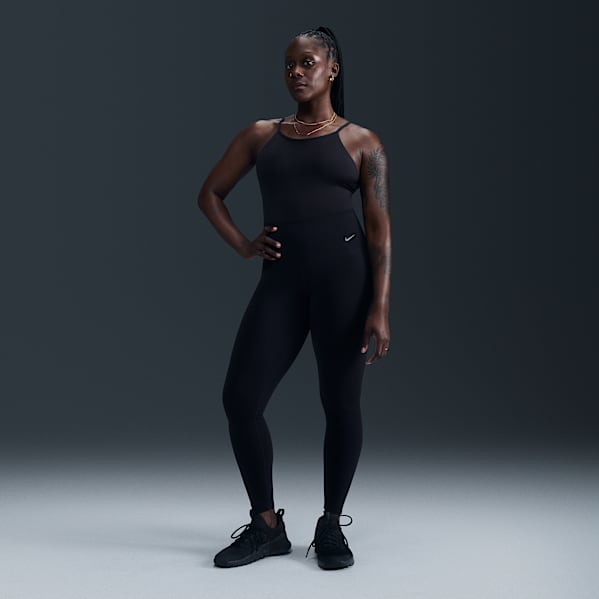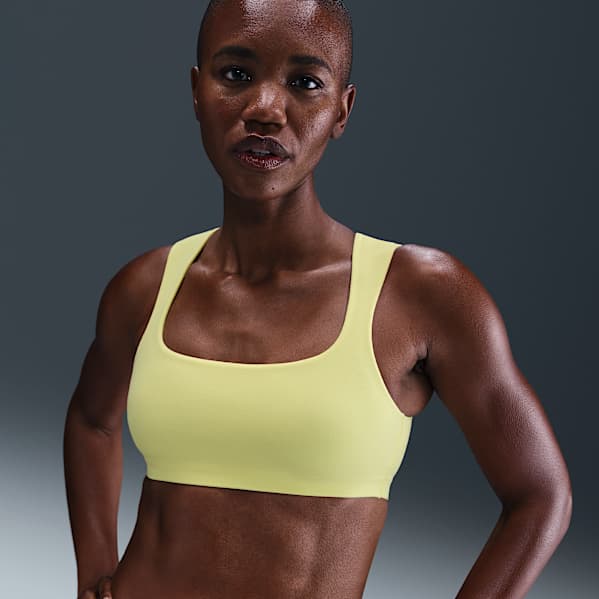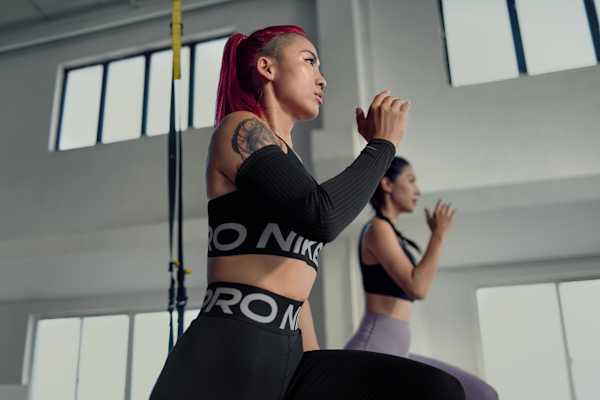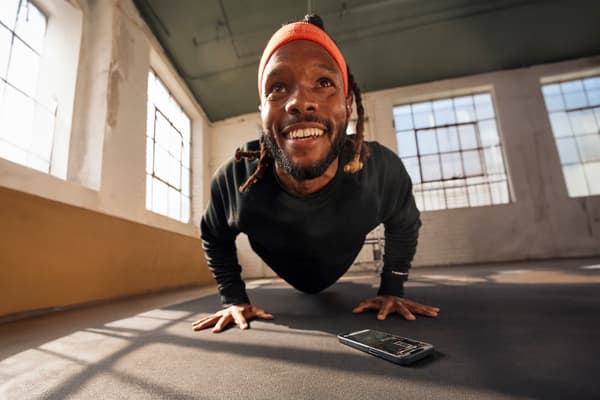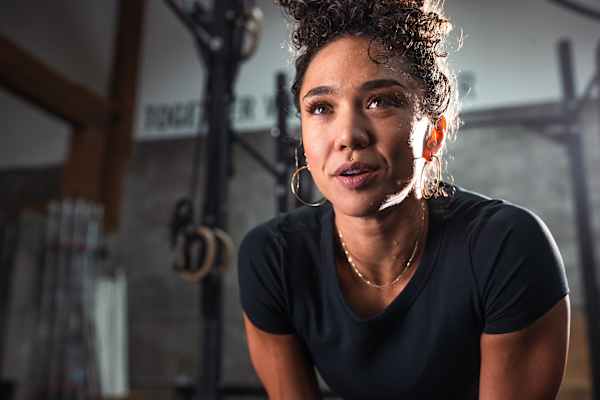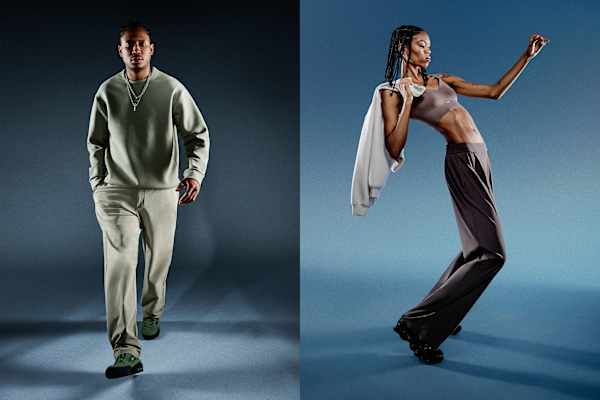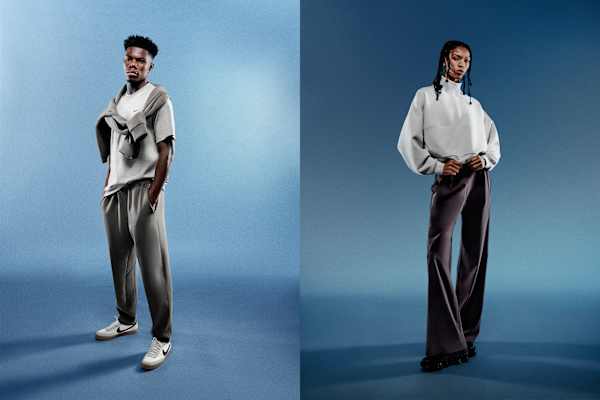Best maternity workout clothes by Nike
Buying guide
Check out the top maternity activewear by Nike, from leggings to sports bras and everything in between.

Your body changes dramatically during and after pregnancy. From growing baby bumps to larger chests to swollen feet, what you need from maternity workout clothes will be a lot different from what you're used to pre-pregnancy. Plus, the best maternity workout clothes should not only offer a comfortable fit but also be functional.
To help take the guesswork out of outfitting your antenatal movement routine, check out the best maternity workout clothes by Nike. These products reflect Nike's commitment to innovation and style, supporting pregnancy and the post-natal period.
How to choose the best maternity workout clothes
1. Bring high levels of support to your workouts.
During pregnancy, "[high-waisted leggings] feel amazing generally but especially while working out, because they provide a sense of lift and stabilisation", said Leah Keller, a certified personal trainer and founder of Every Mother, in a previous interview with Nike.
Nike adapted its best-selling Zenvy leggings and biker shorts to support you from pregnancy through to the post-natal period. Zenvy consists of the same beloved InfinaSoft fabric with a modified waist construction to provide an ultra-high rise and gentle hold for your growing baby bump. The Zenvy maternity leggings and biker shorts include pockets, making them functional and practical additions to a post-natal wardrobe.
2. Opt for soft, stretchy and sweat-wicking styles that prioritise comfort.
As your body transforms to support the growth of a human, treat it to soft, stretchy and sweat-wicking workout clothes that are as cooling as they are comfortable.
"Go for soft textures [that feel] great against stretched skin", antenatal and postnatal fitness specialist and founder of Speir Pilates, Andrea Speir, previously told Nike. Thick and heavy items "tend to drive a pregnant mum who's already feeling hot into the uncomfortable zone".
Nike's Dri-FIT technology brings unmatched breathability to a range of stretchy and unbelievably soft styles—including Zenvy leggings and biker shorts. Coordinate comfortably with the Nike One Women's Dri-FIT Slim-Fit Tops with short sleeves or sleeveless. For a one-and-done style that won't look out of place on the tennis courts or at team meetings, the Nike Women's Dri-FIT Slim-Fit Knit Dress (Maternity) has you covered.
According to Keller, compression shorts during pregnancy "help promote the return of blood flow while working out, standing, walking and even while sitting at a desk". With the One Women's Dri-FIT High-Waisted 20.5cm (approx.) Biker Shorts with Pockets (Maternity), Nike blended that necessary support with midweight, stretchy, peachy-soft fabric and Dri-FIT technology. These maternity workout shorts will keep you comfortably dry—even as body temperature fluctuates throughout pregnancy.
3. Choose sports bras with the right blend of support and functionality.
The right sports bra is a must in pregnancy and post-natal. "Many women notice a breast size increase in the first trimester and throughout the post-natal period, especially if you're breastfeeding", perinatal health coach and educator and the founder of Dear Sunday, Cassie Shortsleeve, previously told Nike. But "sports bras that are too tight can contribute to clogged ducts while breastfeeding".
With soft, brushed fabric, a breathable mesh inner panel and Nike's Dri-FIT technology, the Alate (M) Women's Light-Support Lightly Lined Nursing Sports Bra (Maternity) will keep you contained but never constrained. The bra's one-handed clips offer easy access for nursing, so this style's got you covered through post-natal.
Nike designed the first-of-its-kind Swoosh Women's Nursing and Wearable Pump-Compatible Sports Bra (Maternity) to meet pregnant and post-natal needs from the first trimester through post-natal. The bra features adjustable cup capacity for changing chest sizes, adjustable cups to accommodate wearable pumps, a single-strap drop-down for easy nursing, interior lining that helps prevent visible milk leaks and an adjustable bottom band you can expand as your bump does.
What's more, the bra's padded straps alleviate pressure points and the bra also includes mesh layers for ventilation. And yes, you can use the bra to pump even while working out.
4. Think ahead with products that'll follow you through to the post-natal period.
New parenthood is a beautifully complex time of life. That's why it's important to invest in maternity workout gear that doesn't only fit the bill for now but also keeps you outfitted in the months (or years) to come.
The Nike (M) Women's Reversible Sweatshirt (Maternity) is a sleek, reversible style for warm-ups, cool-downs and discreet nursing moments on the go. Its relaxed fit and soft fabric are so cosy that you may want to live in it well beyond that fourth trimester.
Given everything new parents have to carry—literally and figuratively—Nike has put its own spin on a nappy bag that's so much more than that. With backpack and shoulder-bag modes, lots of organisational pockets inside (including an insulated pouch for snacks and bottles), an easy-to-reach dummy pouch and a discreet back panel for laptops, the Convertible Nappy Bag (Maternity) has parents covered for whatever their days bring.
Finally, no maternity workout outfit is complete without the right pair of supportive shoes. The Nike Reina EasyOn Women's Shoes adapt as your feet do with a proprietary Nike My-Fit Sockliner that can fold and snap to accommodate foot swelling. Nike made putting shoes on while pregnant less of a struggle with easy, no-hands entry—and without sacrificing a secure fit. These shoes are perfect for comfortable, supported and stabilised low-impact movement or everyday wear.
Frequently asked questions about maternity workouts and gear
What are the most important features of maternity workout clothes?
The most important features of maternity workout clothes are:
- Gentle and structured support for your growing baby bump
- Softness, breathability and stretch
- Sports bras that blend support and functionality
- Styles that flex from pregnancy to the post-natal period
What workouts are safe during pregnancy?
The best workouts for your pregnancy depend on your pre-pregnancy routine and health history. Talk to your healthcare provider about what's right for you.
The safest exercise types during pregnancy are:
- Brisk walking
- Swimming
- Water workouts
- Stationary bicycling
- Modified-for-pregnancy yoga and Pilates
- Running and jogging if they were part of your pre-pregnancy routine
- Racquet sports (e.g., tennis, squash, badminton) if they were part of your pre-pregnancy routine
Do you have to wear maternity workout clothes during pregnancy?
In the first two trimesters of pregnancy, stretchy or sized-up non-maternity workout clothes will often work well. As your body changes even more in the third trimester, maternity workout clothes will probably be more comfortable and supportive.
Words by Sarah duRivage-Jacobs

